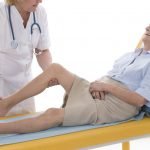A Conversation With Steve Parcell
Jacob Schor, ND, and Steve Parcell, ND
My practice is focused on oncology. Therefore, I have not kept up with new developments related to cardiovascular disease (CVD). When I realized how much of an expert Dr Steve Parcell has become in this area, I started to put questions to him via e-mail. Here is a distillation of our conversations.
Dr Schor: Say a patient comes in with more or less a normal cholesterol level. What should trigger me to worry and perform a more extensive workup?
Dr Parcell: This type of patient exemplifies why CVD is still the number one killer of Americans. People with cholesterol in average ranges still get heart attacks. Half the patients who have an MI [myocardial infarction] today have normal LDL [low-density lipoprotein] cholesterol. This is not because of the “cholesterol myth.” It’s because cholesterol is packaged in lipoproteins that come in different sizes and densities. Saying it another way, each patient is unique, and so is their cholesterol. High particle number and small particle size increase risk of CVD many fold. For example, one patient with an LDL of 130 [mg/dL] may have large particles and low particle number, whereas a second patient with the same LDL of 130 may have a larger amount of LDL particles and/or small LDL particles.
You should actively seek out other risk factors that suggest increased risk. If there are 2 or more risk factors and the patient is over age 30, I would measure carotid intima media thickness. If the result is above the 25th percentile for age, order a heart scan. If the heart scan is above the 50th percentile for age, the patient needs aggressive lipid treatment. The presence of plaque in the coronary arteries requires some form of treatment. The more advanced the disease process is, the more aggressive the treatment needs to be. The key is follow-up. Regardless of the treatment plan, the imaging should be repeated in 1 year.
I would also order a lipoprotein subpopulation test on any patient with cardiovascular disease. These tests are free for Medicare patients. If the patient is under 30, just order a lipoprotein subpopulation test to screen for lipoprotein abnormalities, and counsel them on diet and exercise.
Factors that should trigger a more extensive workup:
- Carotid intima media thickness greater than the 25th percentile
- Cardiovascular symptoms (dizziness, palpitations, SOB [shortness of breath], radiating pain, new fatigue, epigastric pain, tightness in chest, etc)
- First-degree relative (brother, sister, mom, dad) with CAD [coronary artery disease] before age 55
- Blood pressure above 140/80 mm Hg
- Diabetes
- Smoking
Dr Schor: Aside from cholesterol and lipid panel, what other basic CVD screening tests should we routinely run for all our patients?
Dr Parcell: Instead of rushing to order additional testing, ask carefully about all risk factors: smoking, hypertension, sedentary lifestyle, family history of premature coronary artery disease, carotid stenosis, peripheral vascular disease, protein in urine, HDL [high-density lipoprotein] less than 40 mg/dL, known atherosclerosis, diabetes, metabolic syndrome, elevated C-reactive protein, elevated calcium score, elevated Lp(a) [alpha lipoprotein].
By the way, a basic lipid panel is now considered appropriate for all patients, even teenagers and young adults. In addition, an ECG [electrocardiogram] is considered mandatory in an athlete of any age.
Dr Schor: Is there a progression of tests that we should follow if we suspect elevated risks?
Dr Parcell: Yes, but it does not have to be followed in a perfectly linear fashion. Say you have a 40-year-old male with a borderline lipid panel and signs suggestive of prehypertension and early metabolic syndrome who eats well and exercises regularly. Here is what you could do:
- ECG if he has not had one
- Heart scan and carotid intima media thickness
- If normal, just counsel on stress management and hypertension; he has prehypertension
- If CAD is present or CIMT [carotid intima media thickness] is above 25th percentile, run advanced cardiovascular testing. A VAP [spell] is OK too but will give you too much information
- If plaque growth is progressing at greater than 15% a year: myeloperoxidase, F2-isoprostane, blood viscosity, asymmetric dimethylarginine (ADMA), LDL oxidation, fatty acid ratios
Dr Schor: Half of those test names are Greek to me. Is there an idiot’s guide to getting up to speed on how to interpret and respond to the results of these new tests?
Dr Parcell: Well, the labs (Berkeley HeartLab, Cleveland HeartLab, and so forth, would be more than happy to supply information. They have excellent printed guides and great information online.
 Jacob Schor, ND, FABNO is a 1991 graduate of NCNM and has practiced in Denver for the past 17 years. He served as president of the CANP from 1992 to 1999. He has served on the board of directors of the OncANP since 2006 and currently acts as secretary to the board. He is a Fellow of the ABNO. He was utterly shocked and humbled at the 2008 convention of the AANP to be presented with the Vis Award, an honor bestowed in the memory of William Mitchell. He is incredibly lucky to practice with his wife, Rena Bloom, ND. Dr. Schor writes newsletters for his patients that are popular with doctors and students.
Jacob Schor, ND, FABNO is a 1991 graduate of NCNM and has practiced in Denver for the past 17 years. He served as president of the CANP from 1992 to 1999. He has served on the board of directors of the OncANP since 2006 and currently acts as secretary to the board. He is a Fellow of the ABNO. He was utterly shocked and humbled at the 2008 convention of the AANP to be presented with the Vis Award, an honor bestowed in the memory of William Mitchell. He is incredibly lucky to practice with his wife, Rena Bloom, ND. Dr. Schor writes newsletters for his patients that are popular with doctors and students.
 Stephen W. Parcell, ND earned his doctorate in naturopathic medicine from Bastyr University in 2002. Dr. Parcell has done additional training at the American College for the Advancement of Medicine (ACAM), the American Academy of Environmental Medicine, the Institute for Functional Medicine, the National Lipid Association (NLA), the Society for Integrated Oncology (SIO) and the American Academy for Anti-aging Medicine (A4M). He is the past Vice President of the Colorado Association of Naturopathic Doctors (COAND). He is also board certified in anti-aging medicine. Dr. Parcell has a strong background in medical research and “evidence-based natural medicine.” He has published articles in Alternative Medicine Review, The International Journal of Integrative Medicine, Integrated Medicine, a Clinician’s Journal and Naturopathic Doctor News and Review. He also authored a chapter in the textbook entitled “Integrative Approaches to Pain” published by Humana Press in 2008. He has just completed a book on reversing coronary artery disease called, Dare to Live: A Naturopathic Doctor’s Complete Guide to the Prevention and Treatment of Coronary Artery Disease published by iUniverse in 2011. He lives in Boulder, CO with his wife and two kids and is active on the masters road racing scene in Colorado.
Stephen W. Parcell, ND earned his doctorate in naturopathic medicine from Bastyr University in 2002. Dr. Parcell has done additional training at the American College for the Advancement of Medicine (ACAM), the American Academy of Environmental Medicine, the Institute for Functional Medicine, the National Lipid Association (NLA), the Society for Integrated Oncology (SIO) and the American Academy for Anti-aging Medicine (A4M). He is the past Vice President of the Colorado Association of Naturopathic Doctors (COAND). He is also board certified in anti-aging medicine. Dr. Parcell has a strong background in medical research and “evidence-based natural medicine.” He has published articles in Alternative Medicine Review, The International Journal of Integrative Medicine, Integrated Medicine, a Clinician’s Journal and Naturopathic Doctor News and Review. He also authored a chapter in the textbook entitled “Integrative Approaches to Pain” published by Humana Press in 2008. He has just completed a book on reversing coronary artery disease called, Dare to Live: A Naturopathic Doctor’s Complete Guide to the Prevention and Treatment of Coronary Artery Disease published by iUniverse in 2011. He lives in Boulder, CO with his wife and two kids and is active on the masters road racing scene in Colorado.










